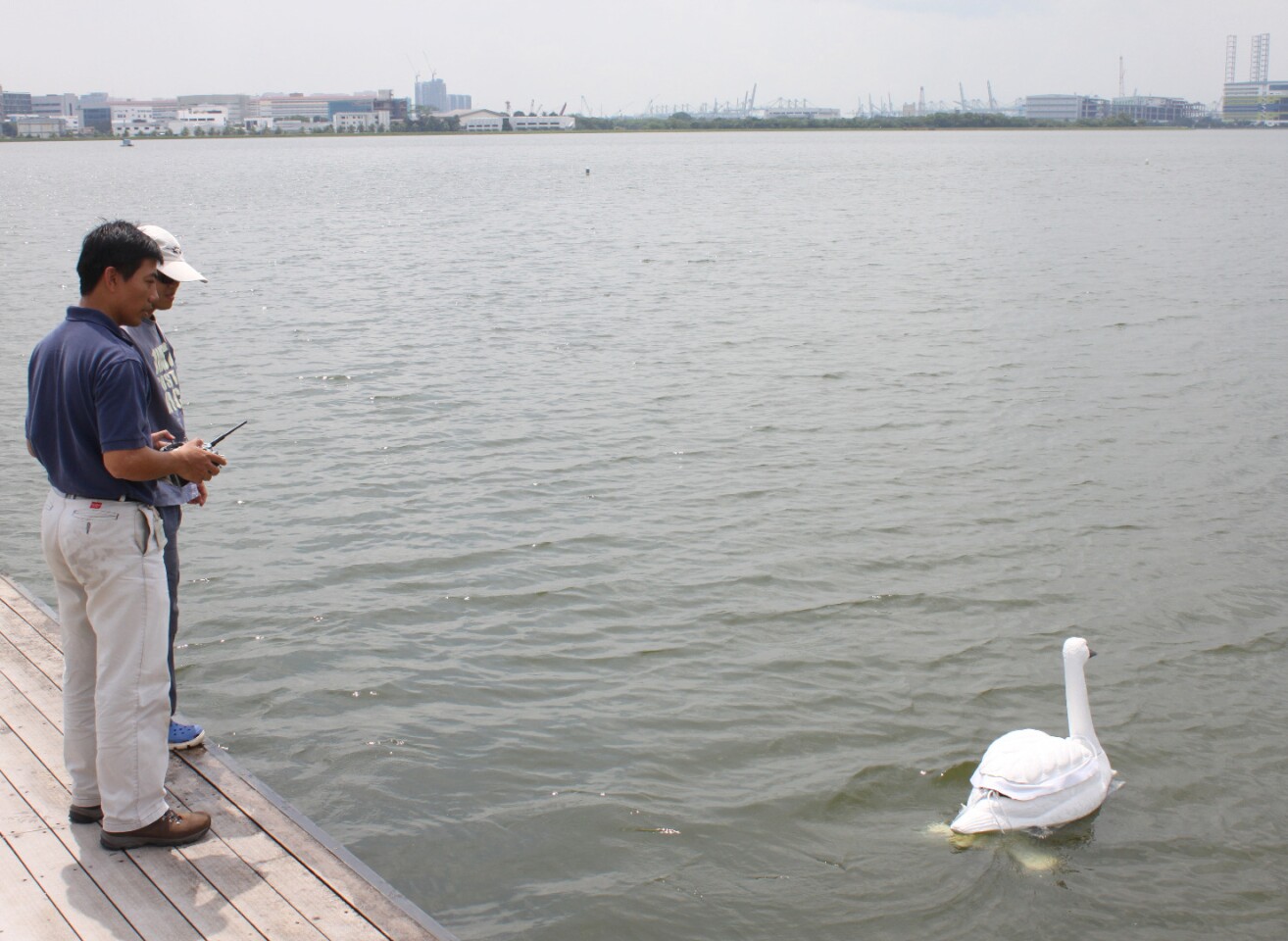If you're enjoying a serene natural area, you might not appreciate seeing a very techy-looking pollution-hunting robot putting along the surface. That's why scientists at the National University of Singapore have developed an alternative – water-quality-monitoring robots that look like swans.
The robots are the product of the NUSwan program, which cleverly enough stands for New Smart Water Assessment Network.
Each one incorporates a battery pack, electric motors and dual props (sorry, they don't actually kick their feet), along with sensors for measuring factors such as pH, turbidity, chlorophyll content and dissolved oxygen. Although they can be manually piloted by remote control, the general idea is that they use their own onboard GPS guidance system to autonomously cruise reservoirs or other bodies of water, without going over the same areas twice – unless that's what's desired.

Data is transmitted to the cloud by Wi-Fi, and the robots automatically return to a charging station when their batteries start to run low. They're also said to be reasonably tough, built to withstand the inevitable collisions with small boats.
While such water quality measurements are currently conducted in Singapore by people in boats, it is believed that the NUSwan system should be less expensive, quicker and logistically simpler.
According to a report by Channel NewsAsia, the robots were first conceived of in 2010. Plans now call for the implementation of other types of sensors, along with adaptation of the technology for use in salt water.
Source: National University of Singapore via Channel NewsAsia








